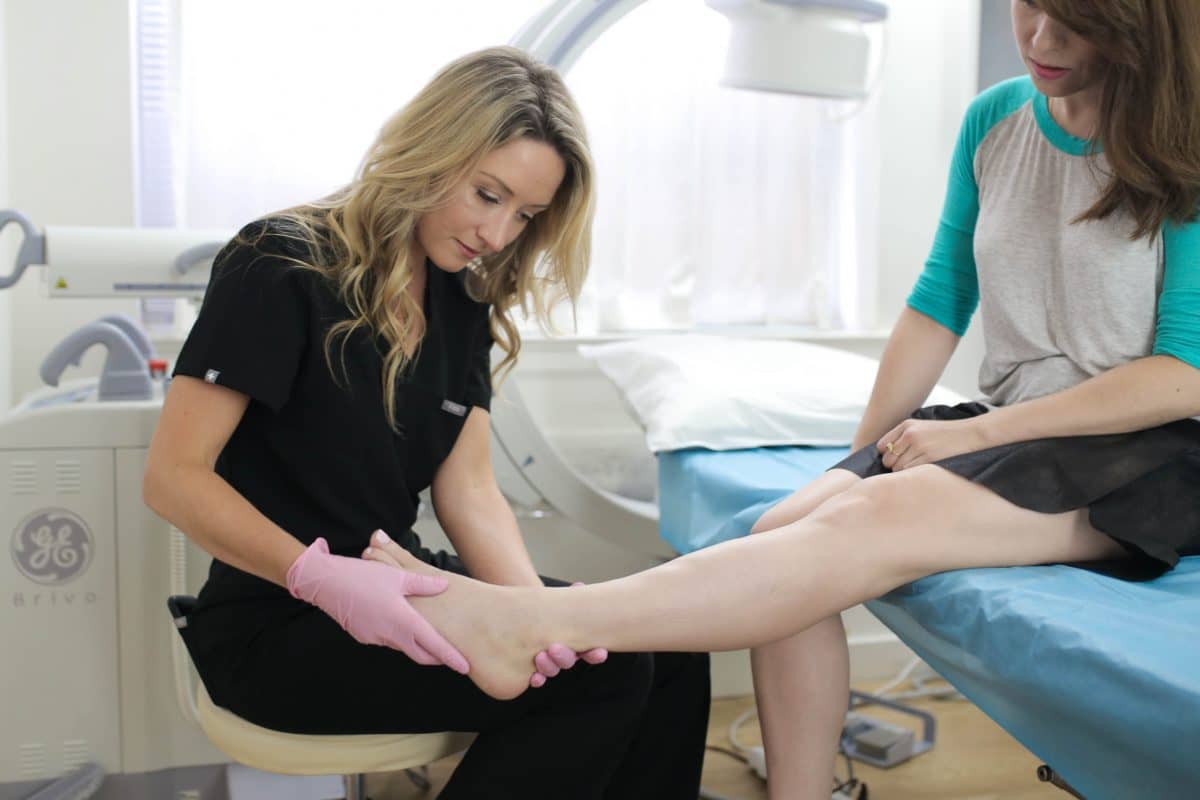How Young Adults Get Varicose Veins
Varicose veins are swollen rope-like knots of blood vessels that protrude from the surface of the skin. They are caused by chronic venous insufficiency, an underlying condition that occurs when the vein valves responsible for effective blood flow malfunction and blood accumulates in the leg veins.
Age is one of the primary risk factors for vein disease. As you get older, your veins valves get weaker and become more likely to malfunction, thereby leading to venous insufficiency and varicose veins. However, it’s a myth that varicose veins only occur past your middle age. Even young adults in their 20s can get varicose veins under certain circumstances.
Regardless of your age, if you notice signs of vein disease — heaviness of legs, leg cramps, restless legs, varicose veins — you need to consult a vein treatment clinic NJ immediately. Varicose veins progress rapidly and, if left untreated, can lead to various other complication like skin infections, leg ulcers, and deep vein thrombosis. The last of these is particularly dangerous because it leads to blood clot formation in the veins, which can be fatal if the blood clots travel to the lungs.
In this article, we discuss how young adults get varicose veins, what are some risk factors that predispose you to vein disease, and how to minimize your risk of varicose veins.

Pregnancy
Pregnancy drastically increases your risk of developing varicose veins. This is mostly because of all the physiological changes that take place in your body during pregnancy. The weight of the uterus can place greater pressure on your veins, which can lead to varicose veins. Furthermore, your body’s total blood volume increases to support the growing baby, but that also leads to vein dilation, which can also lead to varicose veins. Finally, your body goes through erratic hormonal changes that can weaken or relax your vein walls.
Obesity
Being a little overweight isn’t an issue. However, obesity can lead to a number of diseases, including vein disease. Being heavy means your veins are put under a lot of additional pressure, which can weaken the vein walls and lead to the formation of varicose veins. Furthermore, the layers of subcutaneous fat may also make it hard to notice swollen veins, which can be dangerous because you may not identify the initial symptoms of vein disease.

Genetics
Genetics is by far the leading risk factor for vein disease. If both your parents suffer from vein disease, you are almost certain to also suffer from varicose veins. If you’re genetically predisposed towards vein disease, then varicose veins can develop at any time, even in your 20s. So you have to be vigilant and consult a vein doctor the moment you notice the first signs of venous insufficiency.
Sedentary Lifestyle
Do you spend a lot of your time sitting or standing still without any activity? Do you have an occupation that doesn’t involve much movement — such as teaching, office desk jobs, nursing, driving? Being inactive places great pressure on your leg veins and minimizes muscle activity, increasing your likelihood of blood accumulation in your leg veins, which, in turn, causes varicose veins.
Deep Vein Thrombosis
Deep vein thrombosis is a medical condition in which blood clots form inside your veins. These blood clots cause immense damage to your vein walls and vein valves. As such, if you currently have DVT — or if you’ve ever had DVT — your vein valves may be weakened, increasing your likelihood of getting varicose veins.
How to Improve your Circulation?
As the aforementioned points illustrate, even young people can get varicose veins. Can you identify with any of the risk factors mentioned above? If so, you can incorporate some lifestyle changes to improve your circulation and potentially avoid varicose veins.
Compression Stockings
Compression stockings are basically just stockings that apply pressure on your blood vessels. If you’re predisposed to varicose veins, you can start wearing custom-fitted compression stockings as they’ll improve your circulation and minimize the risk of varicose veins.
Calf-Based Exercises
Calf-based exercises such as running, swimming, cycling, and yoga require you to move your legs a lot. This leads to muscular contractions in the legs, which helps push blood along towards the heart.
Elevating your Legs
You can’t really do anything about the fact that you have a sedentary job that requires you to sit for most of the day. However, you can still elevate your legs over the position of your heart to encourage blood circulation. You should also get up and walk around often — even if it’s to the water cooler and back — to prevent blood accumulation in your legs.
Varicose Veins Treatment at the Best Vein Treatment Center
The previously mentioned lifestyle changes can help improve your circulation. But they can’t guarantee that you won’t get varicose veins, nor can they treat varicose veins once the symptoms show up.
At Vein Treatment Clinic, we have some of the world’s best and most reputable vein doctors who can study your condition carefully and run tests to identify the root cause of your varicose veins. We specialize in minimally invasive varicose veins treatment options that conclude within an hour and cause no pain and discomfort.
If you notice any of the warning signs and symptoms of varicose veins and vein disease, please schedule an appointment with your nearest vein treatment center for accurate diagnosis and treatment.








